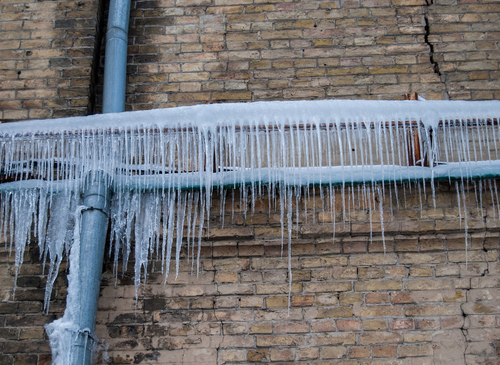Ways to Safeguard Your Pipes from Cold Weather: Specialist Advice
Ways to Safeguard Your Pipes from Cold Weather: Specialist Advice
Blog Article
Have you been searching for related information around 6 Ways to Prevent Frozen Pipes?
:strip_icc()/snow-outdoor-faucet-pipes-4af65d1e5e904fb1aa7bf74071fe5d89.jpg)
Cold weather can wreak havoc on your pipes, particularly by freezing pipelines. Below's how to stop it from happening and what to do if it does.
Introduction
As temperature levels decline, the risk of frozen pipes boosts, possibly leading to costly repair work and water damage. Comprehending exactly how to avoid icy pipes is vital for home owners in cool environments.
Prevention Tips
Protecting susceptible pipes
Cover pipelines in insulation sleeves or utilize warm tape to safeguard them from freezing temperatures. Concentrate on pipelines in unheated or outside areas of the home.
Heating strategies
Maintain interior areas effectively heated, particularly locations with pipes. Open cabinet doors to permit warm air to flow around pipes under sinks.
Just how to identify frozen pipelines
Search for lowered water flow from faucets, uncommon smells or noises from pipes, and noticeable frost on revealed pipes.
Long-Term Solutions
Architectural changes
Consider rerouting pipes away from exterior wall surfaces or unheated locations. Include extra insulation to attics, basements, and crawl spaces.
Upgrading insulation
Invest in top notch insulation for pipes, attics, and wall surfaces. Appropriate insulation assists maintain regular temperatures and decreases the risk of icy pipelines.
Safeguarding Outside Pipes
Yard tubes and exterior faucets
Disconnect and drain pipes garden hoses prior to winter months. Set up frost-proof spigots or cover outside faucets with shielded caps.
Comprehending Icy Pipes
What causes pipes to ice up?
Pipes ice up when exposed to temperature levels below 32 ° F (0 ° C) for prolonged durations. As water inside the pipes freezes, it broadens, taxing the pipe walls and possibly creating them to burst.
Dangers and problems
Icy pipes can cause water supply disturbances, residential or commercial property damages, and expensive repairs. Burst pipelines can flooding homes and create comprehensive structural damage.
Indications of Frozen Water Lines
Determining frozen pipes early can stop them from breaking.
What to Do If Your Pipelines Freeze
Immediate actions to take
If you suspect icy pipelines, keep taps available to eliminate pressure as the ice thaws. Utilize a hairdryer or towels soaked in warm water to thaw pipes slowly.
Verdict
Stopping frozen pipelines requires positive measures and fast responses. By comprehending the reasons, indications, and safety nets, house owners can shield their plumbing during winter.
5 Ways to Prevent Frozen Pipes
Drain Outdoor Faucets and Disconnect Hoses
First, close the shut-off valve that controls the flow of water in the pipe to your outdoor faucet. Then, head outside to disconnect and drain your hose and open the outdoor faucet to allow the water to completely drain out of the line. Turn off the faucet when done. Finally, head back to the shut-off valve and drain the remaining water inside the pipe into a bucket or container. Additionally, if you have a home irrigation system, you should consider hiring an expert to clear the system of water each year.
Insulate Pipes
One of the best and most cost-effective methods for preventing frozen water pipes is to wrap your pipes with insulation. This is especially important for areas in your home that aren’t exposed to heat, such as an attic. We suggest using foam sleeves, which can typically be found at your local hardware store.
Keep Heat Running at 65
Your pipes are located inside your walls, and the temperature there is much colder than the rest of the house. To prevent your pipes from freezing, The Insurance Information Institute suggests that you keep your home heated to at least 65 degrees, even when traveling. You may want to invest in smart devices that can keep an eye on the temperature in your home while you’re away.
Leave Water Dripping
Moving water — even a small trickle — can prevent ice from forming inside your pipes. When freezing temps are imminent, start a drip of water from all faucets that serve exposed pipes. Leaving a few faucets running will also help relieve pressure inside the pipes and help prevent a rupture if the water inside freezes.
Open Cupboard Doors
Warm your kitchen and bathroom pipes by opening cupboards and vanities. You should also leave your interior doors ajar to help warm air circulate evenly throughout your home.

As an enthusiastic person who reads about Preventing and dealing with frozen pipes, I thought sharing that portion was essential. Those who enjoyed reading our blog posting kindly do not forget to pass it around. I am grateful for being here. Return soon.
Book Your Service Report this page